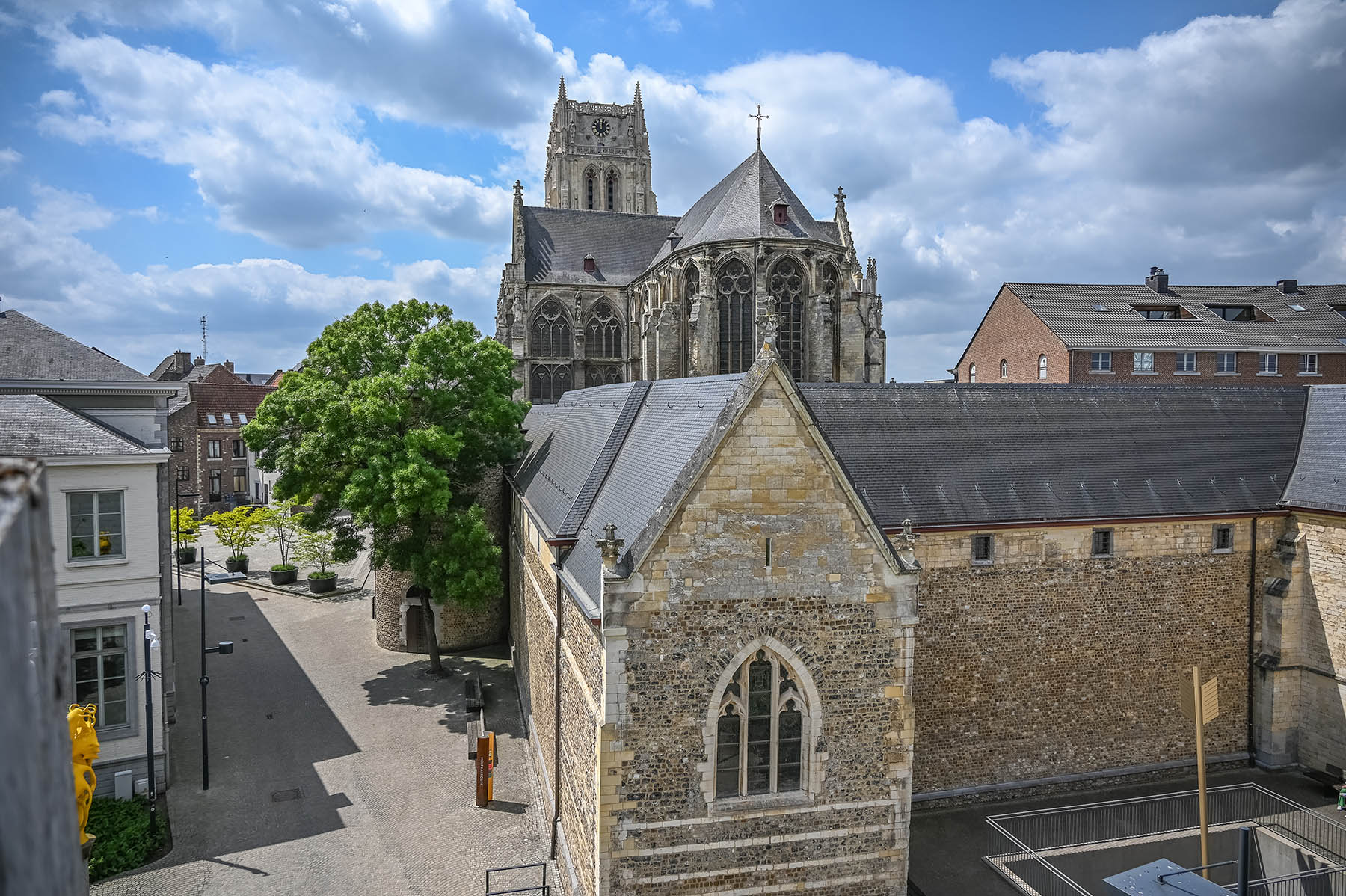The fact that precious metalwork from the Low Countries was of the very highest quality is demonstrated by the spectacular treasury of the Teseum in Tongeren. You'll find numerous masterpieces there! Including the ensemble of fourteen reliquary statues.
Series of Reliquary Statues
The collection of fourteen reliquary statues is regarded as one of the most valuable artefacts in Flanders. Although they originate from different periods, they are a coherent ensemble, with images from the entire 15th and early 16th centuries. Their style ranges from pre-Eyckian to Renaissance. Each statue contains a relic, i.e. the remains of a saint. Sometimes they are incorporated into the sculpture or pedestal, sometimes in a cylinder on or next to the sculpture. Six reliquaries are depicted together with other reliquaries on a 1516 printed pilgrimage souvenir. Pilgrims could purchase these prints as a memento and as proof of which relics they had witnessed with their own eyes. The reliquary statues are still carried along in the procession during the seven-year Coronation Celebrations.
Processional Cross - Anonymous
This silver processional cross, which is more than six hundred years old, is still carried along in the processions in Tongeren. Jesus’ posture elicits pity: his head is resting diagonally on his right shoulder and his entire body, as well as the loincloth, are particularly expressive. The four extremities of the cross are adorned with the symbols of the four evangelists: at the top the eagle of John, on the left the lion of Mark, on the right the ox of Luke, and the angel at the bottom represents Matthew. At the bottom, the six niches on the trunk of the cross all contain a statue of a saint. One of them is the Tongeren bishop Maternus, who is depicted to the left of the central figure. Maternus is also thought to have been a bishop in Trier and Cologne, hence the three churches he is holding in his hand.
Reliquary Bust of Saint Olivia - Anonymous
Saint Olivia is represented as a young woman with shoulder length curly hair. She is wearing a gold coloured robe with a round neck, decorative border and a crystal at the centre. The bust stands on a six-sided pedestal with the inscription: “Caput S. Olivia" (head of Saint Olivia). The bust contains her skull. Olivia was one of the 11,000 virgins who were murdered along with Saint Ursula in 383.
Reliquary Triptych With the Veil of Our Lady - Anonymous
This triptych is very special to the Marian city of Tongeren. For centuries, this local relic, which consists of a rectangular fragment of Mary’s veil, has been venerated and carried along in processions. On the triptych, two angels present it as a white surface - it looks like an abstract painting - but the actual piece of veil is incorporated into a larger canvas, a kind of collage. The collage canvas was nailed to the centre panel of the triptych, which was usually kept closed. This triptych is also of great significance to art history. The painting on the inside of the two shutters dates from around 1400, which is even before the brothers Jan and Hubert van Eyck. Very few examples of this pre-Eyckian art, as it is commonly referred to, survived in these regions. This one originates from the Meuse region, where the Van Eycks also originated from. On view is the Annunciation, the moment when the archangel Gabriel informs Mary that she will become the mother of the son of God. The banderole inscription in Latin reads: “Hail Mary, full of grace, the Lord is with thee,” the start of the Hail Mary prayer. Above Mary who is saying a prayer, God the Father is sending the Holy Spirit to Mary in the shape of a dove.
Reliquary of Remaclus
In the past 100 years, this wooden painted relic shrine was carried in the procession through the streets of Tongeren for the Kroningsfeesten or Coronation Festivities. This masterpiece is now displayed in the Teseum. It contains a relic of Saint Remaclus (600-873), a bishop of Maastricht, who for centuries was venerated in Stavelot and in and around Belgium’s oldest city. According to legend, Remaclus met Saint Trudo, the patron saint of Sint-Truiden, spiritually adopting him.
At one time, the shrine must have been completely covered in gilt. The archives do not provide any information about who painted it. However, the anonymous painter was definitely a talented artist who was comfortable working on a smaller scale. The remaining paintwork is delicately drawn, as evidenced in the faces and clothing of those portrayed. Christ is depicted enthroned on the short side, as the man who bears all the sins of the world. A worried Virgin Mary with the Christ Child can be seen on the opposite side. Peter is portrayed on one of the long sides, holding his enormous key in his right hand, flanked by two Church Fathers, i.e., Saint Gregory and Saint Jerome. Paul is depicted on the other, with his sword, flanked by two other Church Fathers, namely Saint Ambrose and Saint Augustine.
The reliquary must have been on display for many years, perhaps even centuries, in the church of Lierneux, a town between Liège and Bastogne. Later the dean of Verviers gifted it to the dean of the Basilica of Tongeren in 1896. At the time, the shrine contained relics of Saint Symère. Later these were replaced with the relics of Saint Remaclus, which had been preserved in the basilica for many centuries.
Practical information
Accessibility
The treasury and cloister are easily accessible to people with disabilities.
The archaeological site is not easily accessible to people with disabilities.



